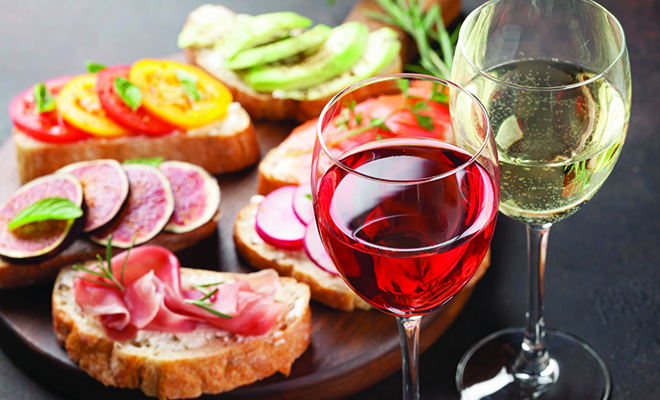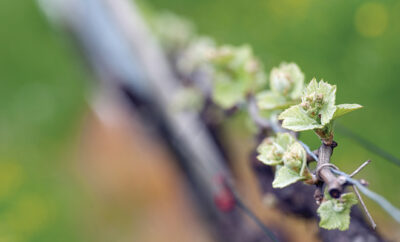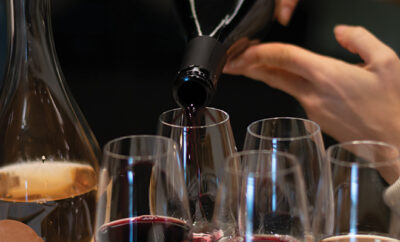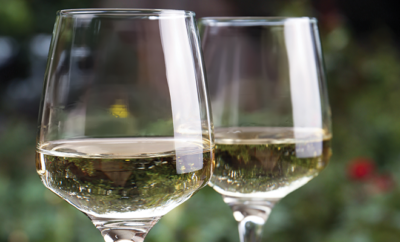
Sipping on the Light Side
Your picnic basket may be lighter this summer season! It’s the season of warmer temperatures and sunshine, longer evenings and lighter meals, picnics and barbeque menus paired up with lighter wine selections.
Be sure to make room for lighter red wines as well as your favorite crisp white wines. This may be shaping up to be one of the best seasons yet with a trend toward lighter wines, both in color and body, just in time for summer. And “lighter” doesn’t mean lighter in quality. The current lighter red wines offer both complexity and acidity to enjoy all season long.
The color of wine on retail shelves is becoming lighter, moving from dark deep burgundy to a lighter hue of ruby. We’re seeing lighter shades of red wines, and I’m not talking about rosé styles. Lovely offerings of grenache, mourvedre, pinot noir, cinsault and zinfandel are available in styles you can nearly see through in your glass. But how do they taste? The lighter profiles of raspberries, pomegranates, honey and rosy-floral notes don’t necessarily mean the wine is sweet; in fact, the wine may appear at first sip to be a bit young or bright, but it has complexity and body to match a variety of seasonal culinary offerings.
One of my favorite wines, and especially in summer, is grenache. Grown as two separate varietals, grenache (red wine grape) and grenache blanc (white wine grape) are two distinctly unique grapes producing specifically different wines. Both stand alone or blend well with other varietals to create pleasant low-tannin wines with a bit of spice, raspberry and sometimes a slight white pepper to the finish. You’ll find many styles of this beautiful Rhone variety to choose from throughout the Lodi, Sierra Foothills and Central Coast wine regions of California. At your local wine retailer, you’ll find offerings from Chile, Argentina, Spain and New Zealand that are worth trying out too.
Cinsaut (SIN-so) is a wine grape variety containing characteristics that are very aromatic and refreshing as a wine. Bottled on its own or used as a blending grape with other Rhone varietals, cinsaut (also spelled cinsault) produces great yields and thrives in hot climates. A very light wine, cinsaut is often blended with mourvedre or syrah, resulting in a light red blend that pairs with cured meats and assorted charcuterie/fruit platters. Interestingly, the cinsaut grape was crossed with pinot noir in the 1920s and the pinotage varietal was born. This light-bodied red wine is quite enjoyable with a bit more tannic structure and the ability to age a bit in the cellar.
We can’t leave out the Italian variety of Dolcetto when talking about the lighter red wines of today’s marketplace. Even though the word makes us think of something sweet, this variety is named for a region of hills in the Piedmont area of Italy. Dolcetto is fruit forward, light on the palate and is perfect to enjoy for light picnic fare or appetizers because it is a drier style of red wine than a grenache.
As winemakers strive to create wines that consumers can’t live without, the trend toward lighter-alcohol wine is being driven in part by consumers of multiple generations looking for ways to incorporate wine into their healthy and active lifestyles. Alcohol by volume, ABV, is a reference to how much alcohol is in the standard serving size for wine. One standard five-ounce glass of wine may have a 12 percent ABV, for example. Although California wines recently have trended lower in alcohol, red wines traditionally retail with a 14 percent to 16 percent ABV. The current trends in the marketplace appear to support wines with levels of alcohol in the 8 percent to 11 percent range and lower. This is very appealing to those adapting to changing dietary needs. Lower-alcohol wines will be lower in tannins, more fruit-forward, higher in that juicy factor and not necessarily sweeter. For your picnic and summer recreation plans, these lower ABV options might be a good choice.
No matter how your summer gardens and menus are shaping up, the assortment of lighter white wines enhances our lighter dishes. One of my favorite white wines is an Austrian varietal, grüner veltliner, which is a wonderfully uncomplicated and versatile white wine. Seafood, cheeses and salads pair very well with the acidity of grüner. If you enjoy vegetables such as artichokes, peppers, zucchini and asparagus, you’ll find that a nicely chilled glass of grüner pairs beautifully with a lemony-garlic sauce for your roasted vegetables, chicken and shellfish.
This is a great time in the age of wine! So many new varietals and producers to try can make it challenging to pick just a few at a time. Enjoy your summer sipping! ■
Sources: alcohol.org, thewinecellarinsider.com and wine-searcher.com.







